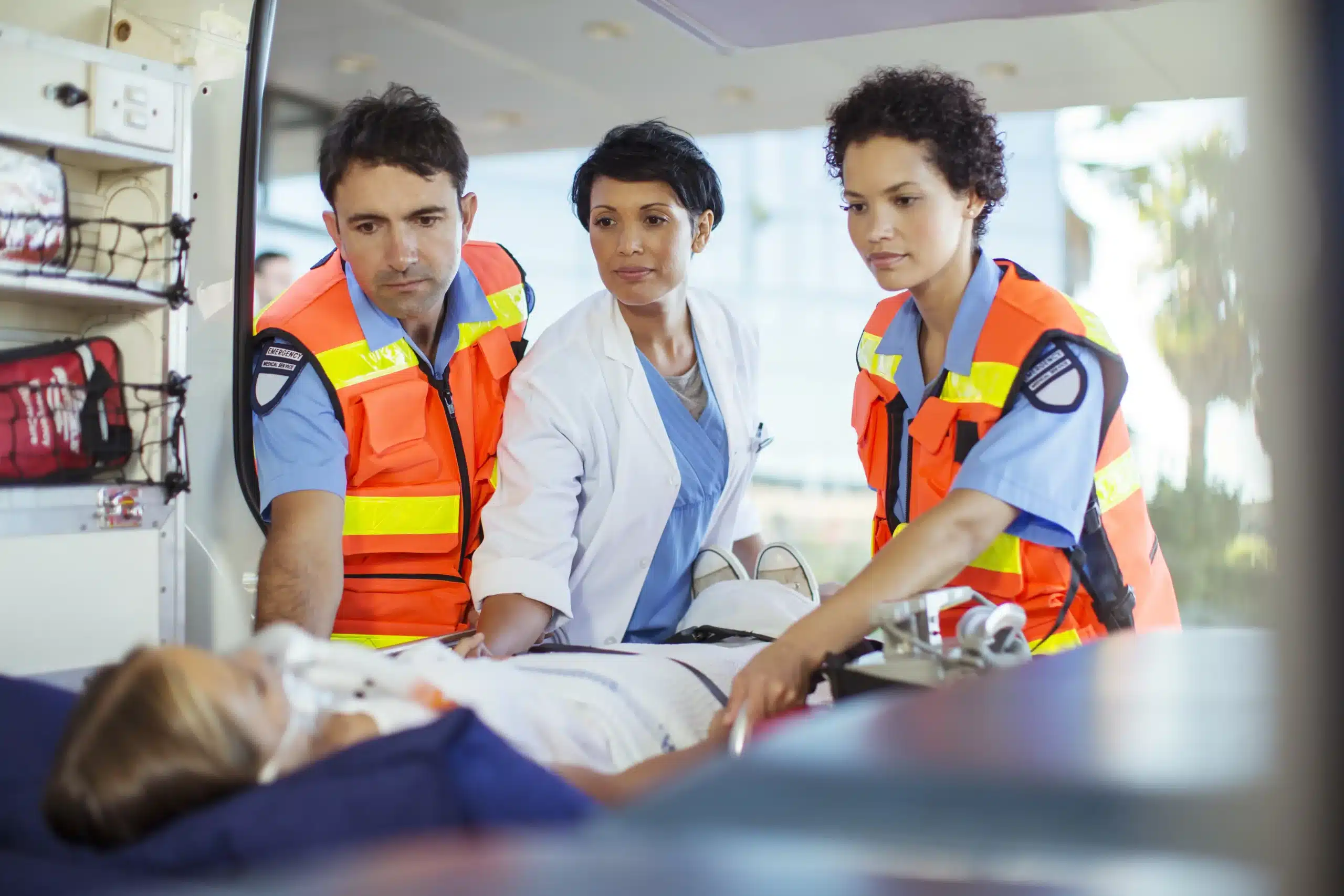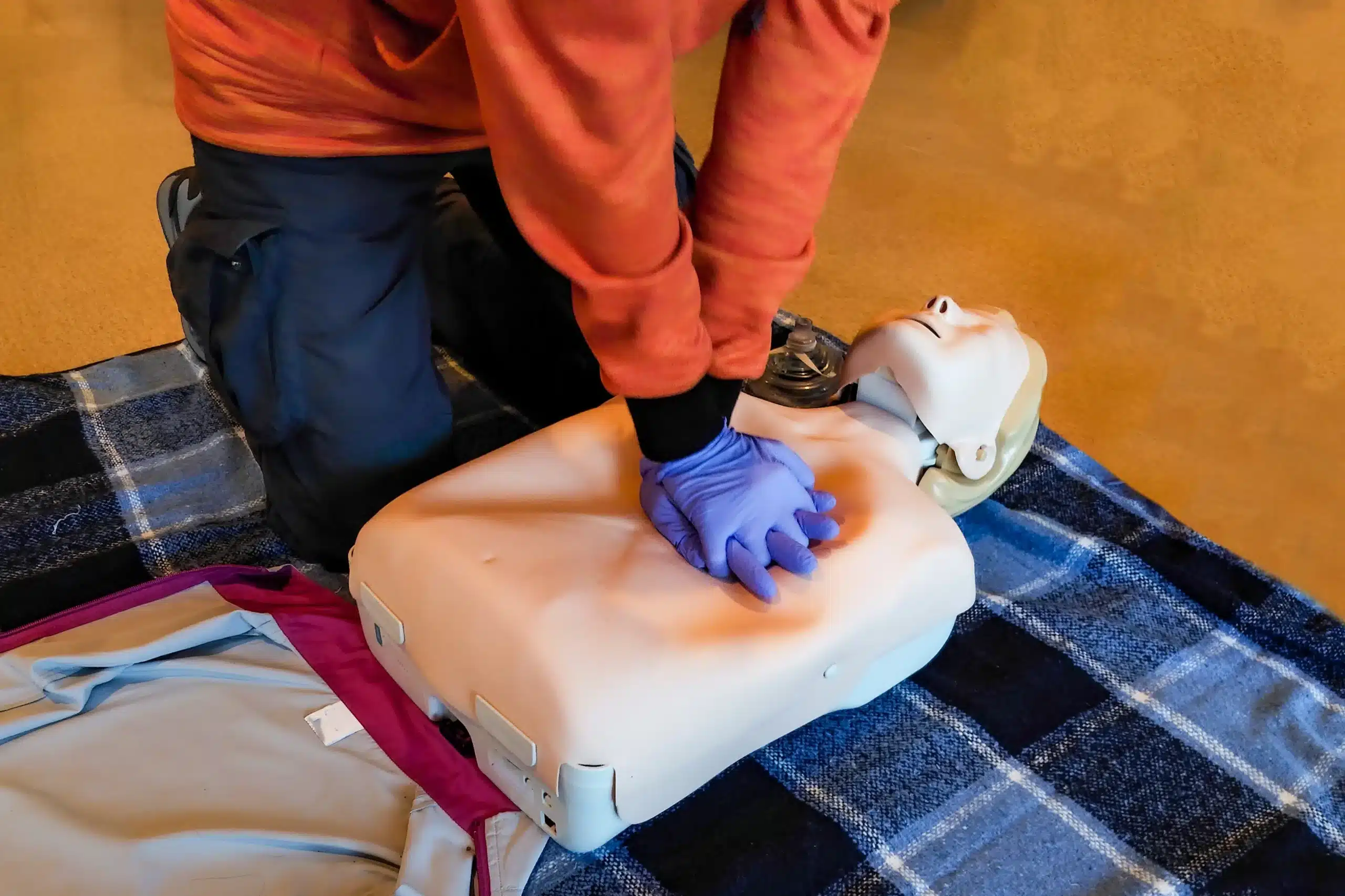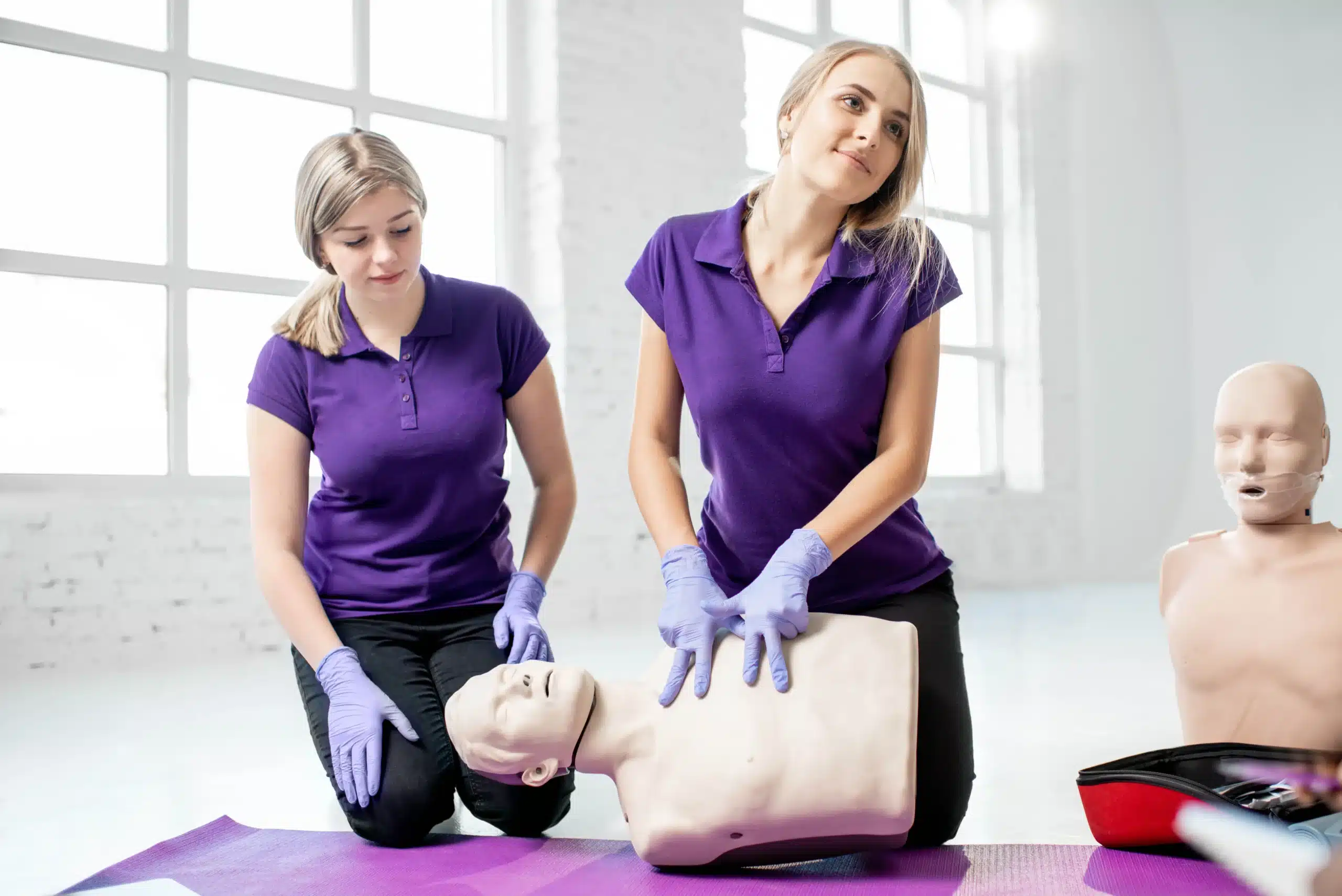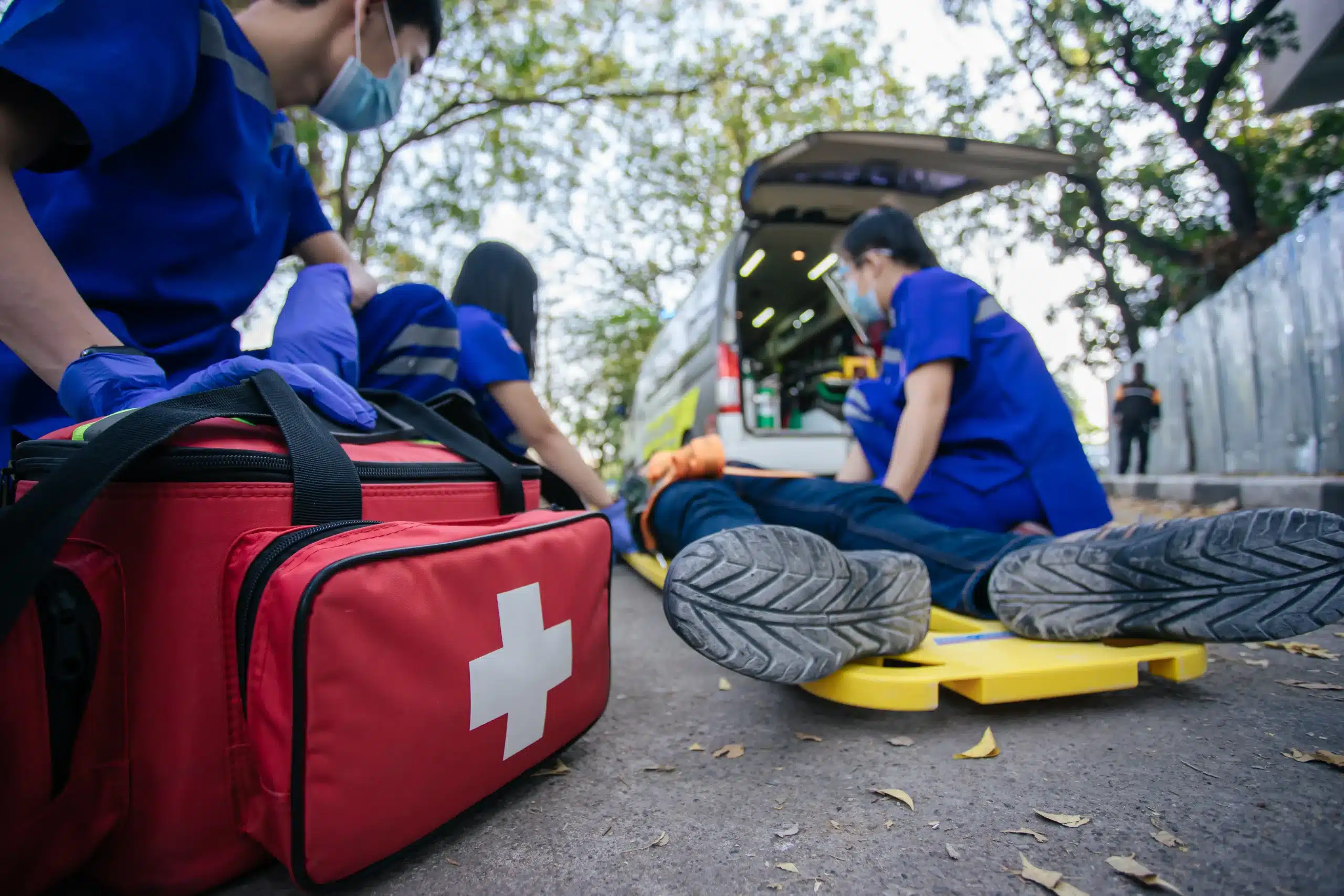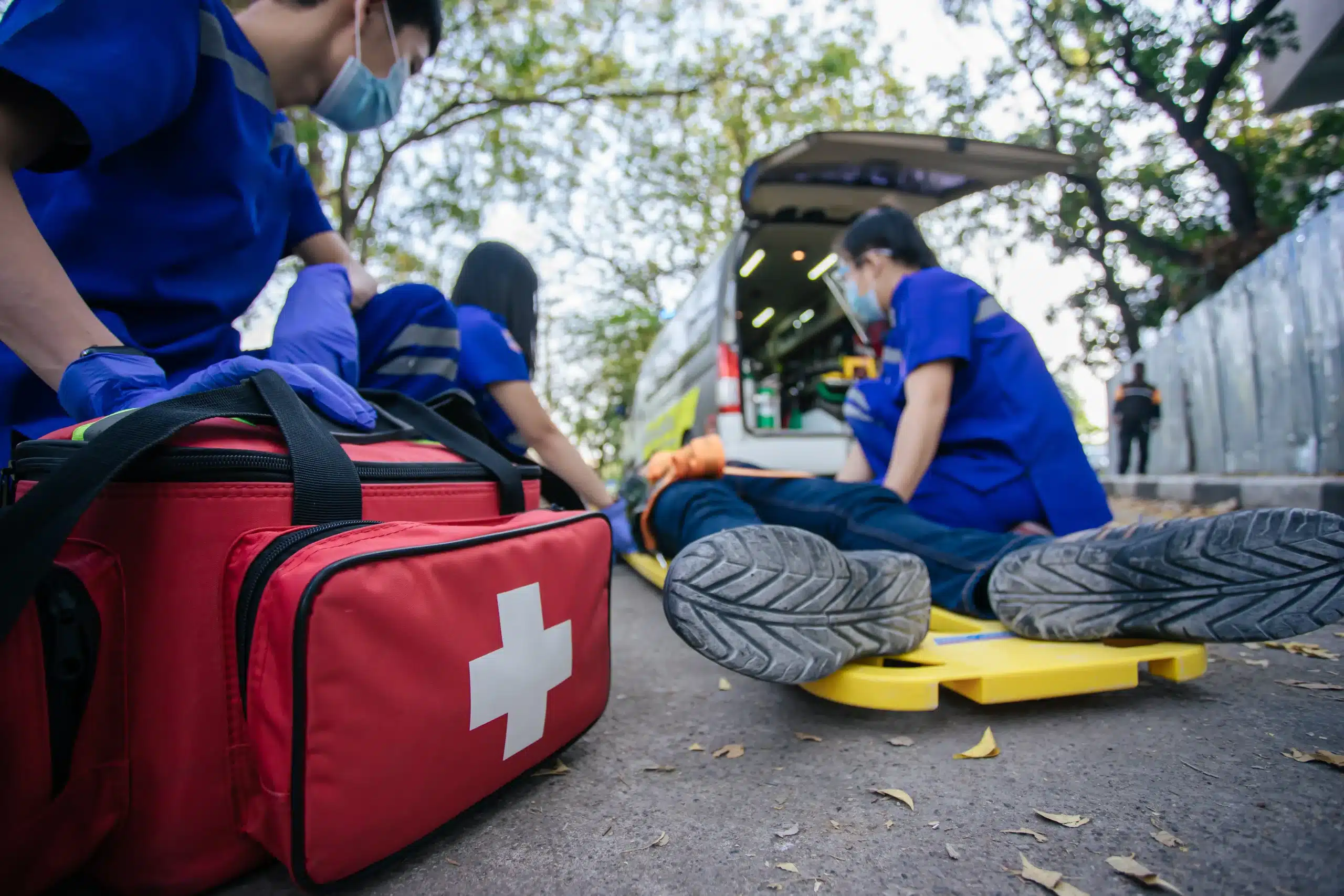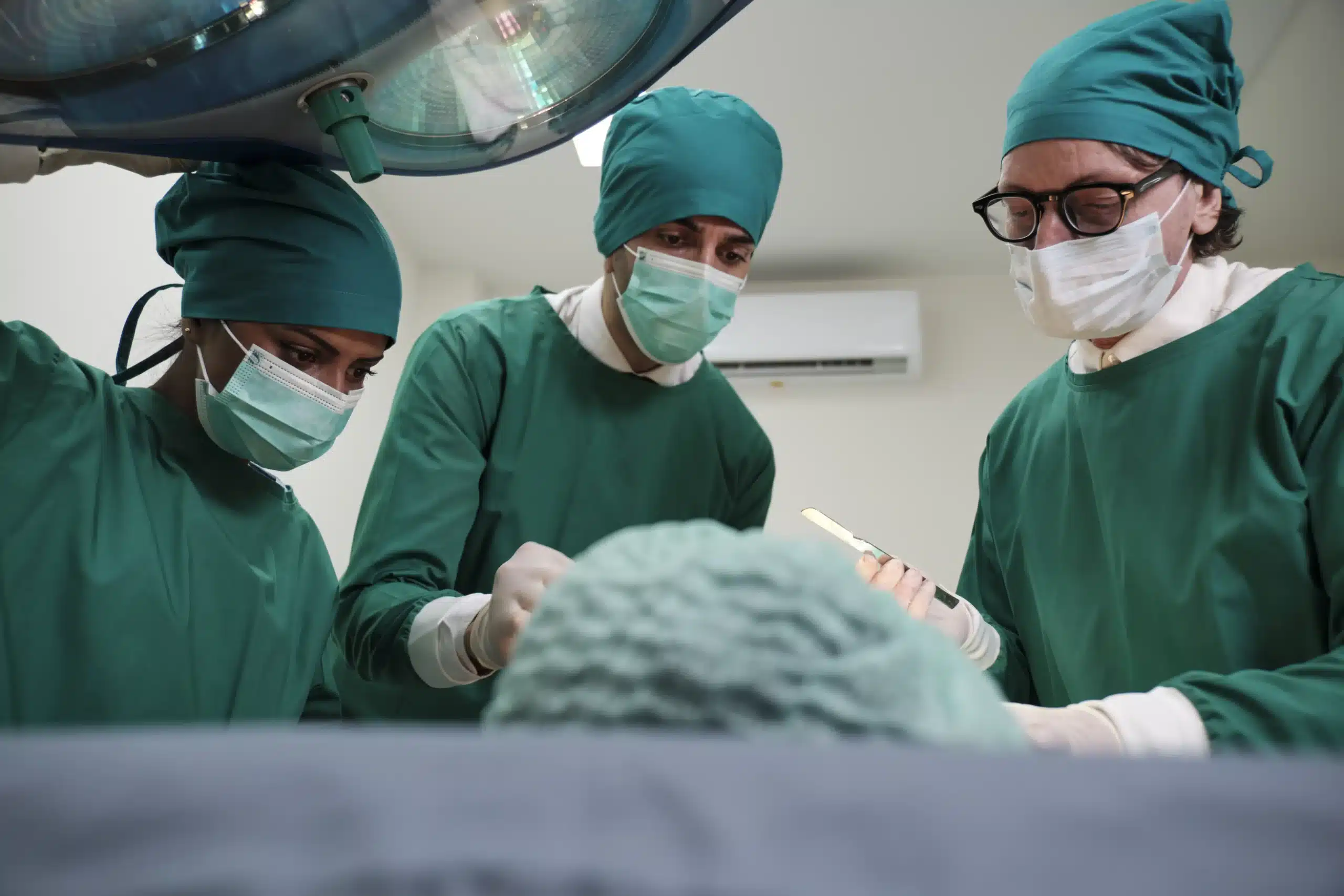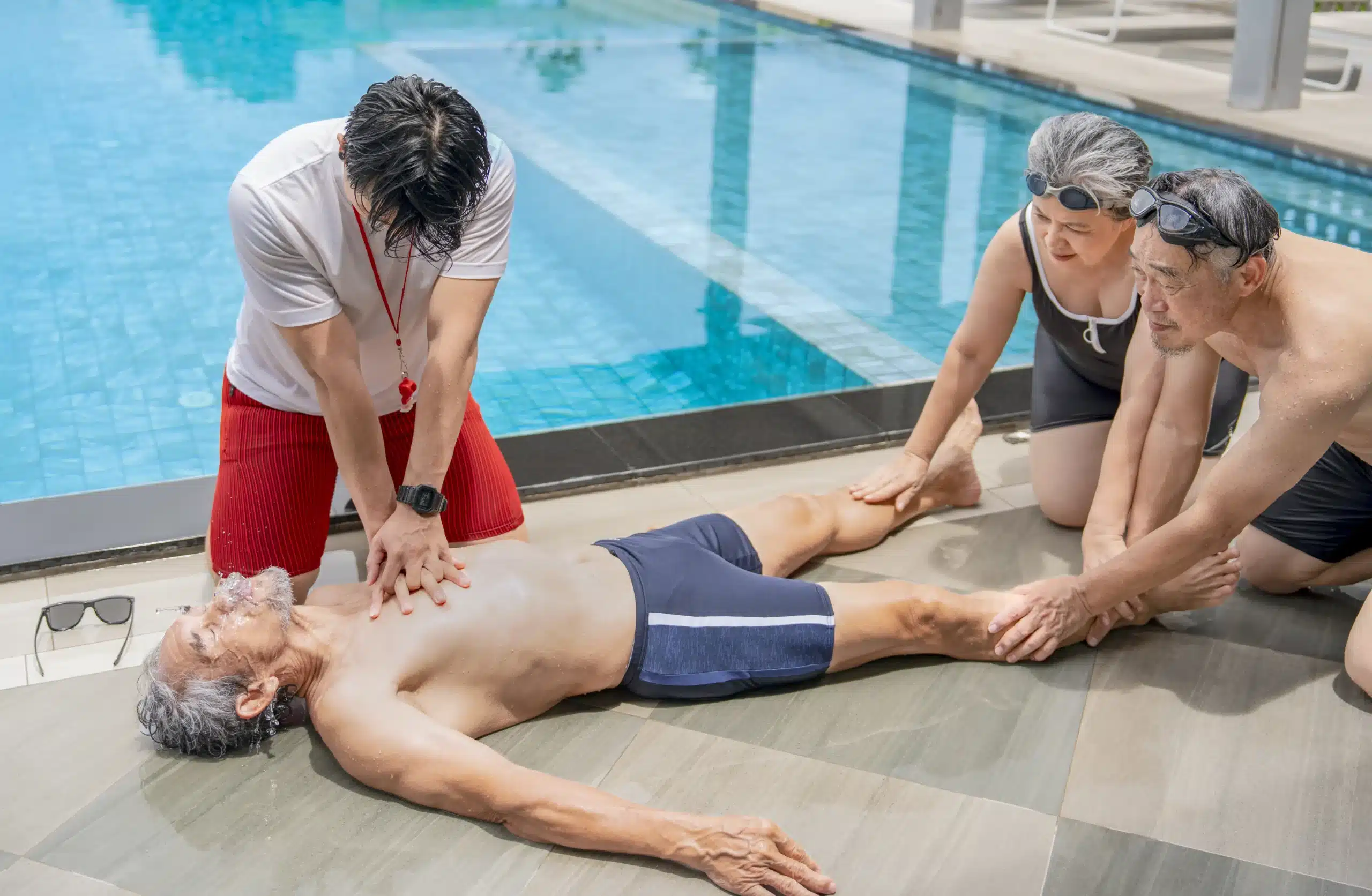Emergencies can happen anytime, anywhere. Would you know what to do if someone near you experienced a sudden cardiac arrest? CPR certification empowers you to act quickly and effectively in these critical situations. This guide provides a clear and comprehensive overview of CPR certification, including different course options, what to expect during training, and how to find CPR certification near me. We’ll also debunk common misconceptions about CPR and discuss the importance of choosing a reputable training provider. Get ready to feel confident and prepared to make a difference.
Key Takeaways
- CPR Certification is a Life Skill: Equipping yourself with CPR training empowers you to respond effectively during emergencies, making a real difference before professional help arrives. Find a course that fits your schedule and learning style.
- Hands-on Training is Key: Look for CPR courses that prioritize hands-on practice with manikins and AEDs. This practical experience builds the muscle memory and confidence needed to perform CPR effectively under pressure.
- Stay Current with Recertification: CPR guidelines and techniques evolve. Renewing your certification every two years ensures you’re always up-to-date and ready to respond confidently in a crisis.
What is CPR Certification?
CPR certification equips you with the life-saving skills to respond effectively during cardiac emergencies. While you’re not legally required to have certification to perform CPR, a formal CPR course ensures you’re properly trained to administer this technique correctly and confidently. It’s about having the right knowledge and skills at a critical moment.
What is CPR and Why is it Important?
Cardiopulmonary Resuscitation (CPR) is a life-saving technique used when someone’s heart stops beating. CPR helps maintain blood flow to the brain and other vital organs until professional medical help arrives. Learning and practicing CPR empowers you to make a real difference in critical situations, enabling you to act quickly and effectively when someone’s life is on the line.
Effective CPR involves more than just theoretical knowledge—it requires practical application. Reputable training centers like Santa Clara CPR Classes emphasize hands-on learning, providing opportunities to practice chest compressions, rescue breaths, and using an AED on training manikins. This realistic training prepares you for the pressures of a real emergency.
Who Needs CPR Certification?
While everyone can benefit from learning CPR, certain professions require this certification. Healthcare professionals, including doctors and nurses, often need CPR certification as part of their job. Other fields, such as childcare, education, and fitness, also frequently require or recommend CPR training. Even if your job doesn’t mandate it, having CPR certification can be a valuable asset, demonstrating your preparedness and commitment to safety. Consider getting certified if you’re a parent, caregiver, or simply want to be equipped to handle emergencies. You can contact us to explore various CPR certification courses to find the right fit for your needs.
CPR Certification Courses
CPR certification equips you with the skills to respond effectively during medical emergencies. Different certification levels cater to various needs and professional requirements. Let’s explore some of the most common CPR certification courses:
Basic Life Support (BLS)
BLS certification provides a foundational understanding of life-saving techniques. You’ll learn how to recognize life-threatening emergencies like cardiac arrest and choking. The course emphasizes practical training, including chest compressions, rescue breaths, and how to use an AED. BLS certification is often a prerequisite for other advanced certifications and is invaluable for healthcare providers, first responders, and anyone interested in being prepared for emergencies. It’s also a smart move for those in fields where these skills are highly valued. For a deeper dive into career relevance, check out this resource on jobs that require CPR certification.
Advanced Cardiac Life Support (ACLS)
ACLS certification builds upon the skills learned in BLS, going further into the management of cardiac arrest and other cardiovascular emergencies. This course is designed for healthcare professionals regularly involved in advanced life support situations. ACLS training covers a broader range of topics, including airway management, pharmacology, and team dynamics during resuscitation. Hands-on practice remains crucial, allowing participants to refine their skills in a simulated environment. This practical approach ensures you can confidently apply your knowledge in real-world scenarios.
Pediatric Advanced Life Support (PALS)
PALS certification focuses on the specific needs of infants and children facing medical emergencies. This course is essential for healthcare providers who regularly work with young patients. PALS training covers pediatric-specific resuscitation techniques, including airway management and medication administration. Like BLS and ACLS, PALS emphasizes hands-on practice to build proficiency in responding to pediatric emergencies.
Find Reputable CPR Certification Providers
Finding the right CPR certification provider is crucial for receiving high-quality training. Several respected organizations offer comprehensive CPR courses that meet industry standards. Here are a few prominent options to consider:
American Heart Association
The American Heart Association (AHA) is a leader in CPR training, known for its evidence-based courses and commitment to advancing cardiovascular care. The AHA offers various courses, from Basic Life Support (BLS) for healthcare providers to Heartsaver courses for the general public. Their certification is widely accepted and demonstrates a commitment to quality training. AHA courses often include hands-on practice and skill assessment to ensure competency.
American Red Cross
The American Red Cross is another well-respected provider of CPR certification. They offer various course formats, including in-person, online, and blended learning options, catering to different learning styles and schedules. Red Cross CPR certification is recognized nationally and equips individuals with the knowledge and skills to respond effectively in emergencies. Their courses cover essential techniques and often include AED training.
National Safety Council
The National Safety Council (NSC) provides CPR and first aid training programs suitable for workplaces, community groups, and individuals. NSC courses emphasize practical skills and real-world scenarios, preparing participants to handle various emergency situations. Their certification is valued by employers and demonstrates a commitment to safety training. The NSC also offers specialized courses for specific industries.
Local Healthcare Facilities
Many local hospitals and clinics offer CPR certification courses to their staff and the community. These courses are often taught by experienced healthcare professionals and provide hands-on training in a realistic setting. Check with hospitals and medical centers in your area for available courses. This can be a convenient and cost-effective option.
Community Colleges
Community colleges frequently offer CPR certification courses as part of their continuing education programs. These courses are often more affordable than private providers and can be a good option for those seeking flexible scheduling. Community college CPR courses typically cover the same core material as other providers and offer a solid foundation in CPR techniques.
Choose the Right CPR Course Format
Finding the right CPR course format depends on your learning style, schedule, and certification requirements. Let’s explore in-person, online, and blended learning options to help you make the best choice.
In-Person Classes
In-person CPR classes offer hands-on training essential for mastering life-saving techniques. Learning alongside others provides opportunities for collaborative practice and immediate feedback from a certified instructor. These courses typically result in a two-year certification that meets OSHA standards, ensuring you’re prepared for real-life emergencies. In-person training effectively covers primary assessments, ventilations, choking response, CPR, and AED use. This format is ideal for those who value direct interaction and learn best through hands-on practice.
Online Courses
Online CPR courses offer flexibility and convenience, often at a lower cost. You can learn at your own pace and complete the coursework from anywhere with an internet connection. However, online-only CPR certifications may not meet all employer or state requirements. The lack of hands-on practice can also hinder the effectiveness of the training. If you choose an online course, carefully check if it meets your specific requirements and consider supplementing it with in-person practice. Online CPR courses can be valuable for refreshing your knowledge, but may not be sufficient for initial certification or jobs with stringent requirements.
Blended Learning
Blended learning courses combine online learning with the hands-on practice of in-person sessions. This format offers a balance of flexibility and practical experience. You can study the cognitive components online at your own pace, then attend an in-person skills session to practice techniques and receive instructor feedback. Blended learning CPR courses often meet state requirements, making them an excellent option for those who want online convenience combined with the benefits of hands-on training.
What to Expect During CPR Training
CPR training blends classroom learning with hands-on practice, ensuring you grasp the techniques and can apply them confidently. Here’s a breakdown of what a typical class entails:
Classroom Instruction
A CPR course is crucial for understanding how to perform this life-saving practice. The classroom portion covers essential topics like recognizing the signs of a cardiac arrest, understanding how CPR works, and learning the steps of the chain of survival. You’ll also learn about different CPR techniques for adults, children, and infants. This foundational knowledge prepares you for the practical application that follows.
Hands-On Practice
Effective CPR involves practical application, and reputable training centers emphasize hands-on learning. You’ll have the opportunity to practice chest compressions, rescue breaths, and the use of automated external defibrillators (AEDs) on training manikins. These simulations create a safe environment to build muscle memory and confidence in performing CPR in real-life situations. Courses often include different scenarios to help you adapt your skills to various emergencies.
Assessment and Certification
Your CPR training will include assessments to ensure you’ve grasped the techniques and can perform them correctly. Instructors observe and provide feedback, helping you refine your technique. Successful completion of the course leads to CPR certification, typically valid for two years. This certification demonstrates your competency in CPR and is often a requirement for certain professions. You can find more information on CPR certification and requirements from organizations like the American Red Cross.
CPR Certification: Cost and Duration
CPR certification is an investment in your skills and ability to help in a medical emergency. Understanding the costs, time commitment, and renewal process can help you plan for your training.
Average Costs and Discounts
The cost of CPR certification varies depending on the type of training and your location. Individual CPR training typically ranges from $20 to $55. Pediatric CPR training usually falls between $25 and $40. Combined CPR and First Aid training often costs around $40 to $60 per person. Healthcare providers seeking Basic Life Support (BLS) classes can expect to pay around $60 to $80. Organizations like the Red Cross frequently offer discounts on training materials and emergency preparedness supplies, which can lower your overall expenses. Check with your chosen provider, like Santa Clara CPR Classes, for potential discounts or group rates. We offer a low price guarantee.
Typical Course Lengths
Most CPR/AED courses range from two to just over four hours. This timeframe allows for a combination of classroom instruction and hands-on practice. You’ll learn essential skills like chest compressions, rescue breaths, and how to use an Automated External Defibrillator (AED). The practical training component usually involves working with manikins in a safe environment to simulate real-life scenarios. CPR classes offer a blend of instruction and hands-on training within this typical time frame. Contact us to learn about our convenient class schedules with daily availability in Santa Clara and other cities.
Certification Renewal
CPR certifications are typically valid for two years. To stay up-to-date on the latest guidelines and techniques, renewing your certification is essential. Many organizations offer recertification classes, often streamlined for those who have already completed the initial training. This ensures your skills remain sharp and you can confidently respond to emergencies. Check out our CPR courses to maintain your certification.
Prepare for Your CPR Certification
Getting ready for your CPR certification? Great! A little prep work goes a long way. This section covers the essentials to help you feel confident and prepared for your class.
Required Materials
While your CPR instructor will provide most of what you need, having a few key items can enhance your learning experience. A “Ready Reference” card can be a handy tool for quick reviews and a helpful supplement to your course materials. Organizations like the American Red Cross offer these resources. You’ll likely receive a student manual and access to online resources to reinforce your learning. Having your own copy of key materials allows you to study at your own pace and revisit important information as needed.
Recommended Pre-Course Study
Before your class, familiarize yourself with the basic concepts of CPR. Even a quick review of the fundamentals can make a big difference in how well you absorb the information presented during the course. Check out some free study guides online to brush up on key techniques and address any questions you might have beforehand. Understanding the core principles and dispelling common misconceptions about CPR and First Aid will set you up for success in your training. This preparation will also help you feel more comfortable during the hands-on portion of the class. A little advance study can make the learning process smoother and more enjoyable.
Maintain Your CPR Skills
CPR is a perishable skill. Even after completing your CPR certification course, staying sharp requires ongoing effort. Regular practice and refresher courses are key to maintaining the muscle memory and confidence you’ll need to perform CPR effectively during a real emergency.
Refresher Courses
CPR certifications, like those from the American Heart Association, are typically valid for two years. Recertification courses cover the latest guidelines and techniques, ensuring your skills remain current. Even if your certification has expired, the CDC still recommends performing CPR in an emergency. However, maintaining a current certification demonstrates your commitment to best practices. Consider setting reminders for your recertification deadlines to keep your credentials up to date. Santa Clara CPR Classes offers a variety of refresher courses to help you stay current.
Practice Opportunities
Hands-on practice is essential for mastering CPR. Reputable training centers, like Santa Clara CPR Classes, emphasize practical learning, providing ample opportunities to practice chest compressions, rescue breaths, and AED use on training manikins. This simulated experience builds the muscle memory and confidence needed to respond effectively under pressure. Some training sessions even involve team-based CPR practice, reinforcing the importance of coordination and clear communication during real-life emergencies. Consider incorporating regular practice sessions into your routine, even between refresher courses. This might involve practicing on a personal manikin or reviewing CPR techniques with colleagues.
Select the Best CPR Provider
Choosing the right CPR certification provider is a big decision. It impacts the quality of your training and your confidence in responding to emergencies. Here’s how to find a provider that meets your needs:
Factors to Consider
Hands-on practice is the cornerstone of effective CPR training. Look for providers like Santa Clara CPR Classes that prioritize practical learning. You should have ample opportunities to practice chest compressions, rescue breaths, and using an AED on training manikins. This simulates real-life scenarios and builds the muscle memory you’ll need in a crisis. A good instructor will observe your technique and provide feedback, ensuring you’re performing CPR correctly. Instructors should be certified by reputable organizations like the American Heart Association.
Beyond the hands-on training, consider the class size and the overall learning environment. Smaller classes often allow for more personalized instruction and feedback. Also, think about the course schedule and location. Choose a provider that offers classes at times and places that work for your schedule. Santa Clara CPR Classes offers daily classes and flexible scheduling to accommodate busy professionals and families. Consider their convenient location if you live in or around Milpitas, San Jose, or Santa Clara, CA.
Reviews and Testimonials
Reading reviews and testimonials from past participants offers valuable insights into a CPR provider’s strengths and weaknesses. Look for comments about the quality of instruction, the hands-on training experience, and the overall learning environment. Positive feedback about the program’s convenience and accessibility is also a good sign. For example, reviews mentioning flexible scheduling options or a comfortable learning environment can help you gauge whether the provider is a good fit for you. Check out reviews and testimonials for Santa Clara CPR Classes to see what past participants have to say. Don’t hesitate to contact the provider directly with any questions. A reputable provider will be happy to address your concerns and provide additional information about their courses. Santa Clara CPR Classes also offers a low price guarantee, so you can be confident you’re getting quality training at a fair price.
Common CPR Certification Misconceptions
It’s easy to get confused by conflicting information about CPR training. Let’s clear up some common misconceptions surrounding CPR certification.
Online vs. In-Person Training
One common misconception is that online CPR training is equivalent to in-person training. While online courses offer convenience and affordability, they often lack the hands-on practice crucial for mastering CPR. Effective CPR requires physical skill and muscle memory, and reputable training centers like Santa Clara CPR Classes emphasize hands-on learning in a classroom setting. In-person CPR training provides real-time feedback from instructors, allowing you to refine your technique and build confidence.
Certification Duration
Another misconception is that CPR certification lasts forever. In reality, CPR guidelines and best practices are updated regularly. Most CPR certifications, like those from the American Heart Association, are valid for two years. Renewing your CPR certification ensures you stay up-to-date with the latest techniques and maintain your skills.
Who Needs CPR Training
Some people believe CPR training is only necessary for healthcare professionals. The truth is, anyone can benefit from learning CPR. From medical students and healthcare providers to teachers, coaches, and parents, CPR skills empower individuals to respond effectively in emergencies. Equipping yourself with these skills can make a profound difference in the lives of your loved ones and your community. CPR training provides valuable skills applicable in various personal and professional settings. Contact us to learn more about CPR training and find a class that fits your needs.
Related Articles
- CPR Certification in San Jose: A Complete Guide
- CPR Renewal in San Jose: Your Complete Guide – Santa Clara CPR Classes
- Why CPR Matters in Healthcare
- CPR Courses in Milpitas: Your Complete Guide – Santa Clara CPR Classes
- Debunking Common CPR Myths
Frequently Asked Questions
How do I choose the right CPR certification course? Consider your current profession or aspirations. Basic Life Support (BLS) is a good starting point for most, while healthcare professionals might need Advanced Cardiac Life Support (ACLS) or Pediatric Advanced Life Support (PALS). Think about whether in-person, online, or blended learning suits your schedule and learning style best.
What can I expect during a CPR class? Expect a mix of classroom instruction and hands-on practice. You’ll learn the theory behind CPR and then practice techniques like chest compressions, rescue breaths, and AED use on manikins. There will also be assessments to ensure you’ve mastered the skills.
How much does CPR certification cost, and how long does it last? Costs vary depending on the course type and provider, generally ranging from $20 to $80. Most certifications are valid for two years, after which you’ll need a refresher course. Look for providers offering discounts or group rates.
Is online CPR certification enough? While online courses offer flexibility, they often lack the crucial hands-on practice component. In-person training provides real-time feedback and helps build the muscle memory needed for effective CPR. Check if your employer or state requires in-person training.
How can I keep my CPR skills current after certification? Regular practice is key. Consider refresher courses before your certification expires to stay updated on the latest guidelines. Even practicing on a personal manikin or reviewing techniques with colleagues can help maintain your skills.
